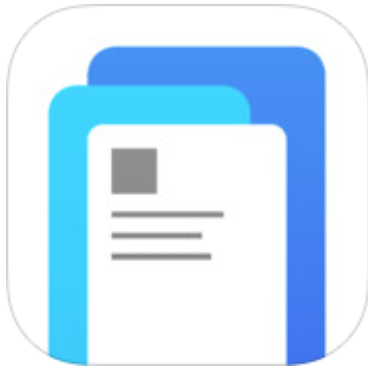What the Tech: Paper by Facebook
 In the age of technology, style and function can easily be mixed together with a few lines of computer code. Take Facebook for example, a very popular social network used by millions of people across the country. Facebook is constantly updating their website in order to be more functional to the user but also streamlined and stylish to appeal to those who enjoy their technology to be clean. The same design philosophy has been seen in Facebook’s new social networking app Paper, available exclusively for the Apple App store at no cost. Paper’s goal is to create a new social networking experience based on fluidity and style, but does so at a loss of user interface and functionality.
In the age of technology, style and function can easily be mixed together with a few lines of computer code. Take Facebook for example, a very popular social network used by millions of people across the country. Facebook is constantly updating their website in order to be more functional to the user but also streamlined and stylish to appeal to those who enjoy their technology to be clean. The same design philosophy has been seen in Facebook’s new social networking app Paper, available exclusively for the Apple App store at no cost. Paper’s goal is to create a new social networking experience based on fluidity and style, but does so at a loss of user interface and functionality.
Paper takes cues from the popular news app Flipboard and applies it straight to the Facebook model. The first time you launch the application, you are tasked with assigning “Sections” to your main board to sit alongside your News Feed. These sections range from photojournalism, cooking ideas, news, technology, business and so on.
Each sections includes posts from pages that represent the respective section. This allows the user to comment and like posts from pages that they don’t even follow, but would be interested to see because of similar interests in other pages.
In each section, you can slide through different stories on the bottom side of the screen while the top side of the screen flashes through different “Top Stories”. This duality makes the application very pretty to watch in action. By sliding the upper portion of the screen, you can move to and from the different sections.
However, these sections can’t be modified in any way, which leaves the choices of which stories you can see to become very limited. Another design quirk is that there are a finite amount of sections, around 20 or so, but only 10 can be displayed at one time in your main board. With an inability to change what stories you can see in each section, and a limit on what types of stories you can see, Paper already has me feeling constrained.
One of my favorite features is best used in the news Sections. When you want to see a post, you can “flip” it up to take up the entire screen. This allows you to read the full post and comment on or like the post. If there is a link that leads directly to a news article, it will have a thumbnail representing the article. You can then flip the thumbnail up, and it will open up the article in an in-application web browser. To go back, simply flip the stories and posts back down.
All of these movements are very fluid, but can sometimes feel forced. There were times when I felt like my inputs were completely dropped and I had to vigorously flip up for the app to register my desire to read an article.
A curious oddity of the application is the lack of notifications from Facebook. The only way to turn on the notifications is to go to application settings and turn them on. Even then, the application funneled the notifications from my already installed Facebook application. This was one reason why I kept going back to the regular Facebook app.
The second reason I constantly returned to the original Facebook app was the amount of interaction on the original app. Paper acts more like a Facebook viewer than an actual application for some of the other features of the application. Group pages are not readily displayed in Paper, and creating events is impossible on the app. At the same time, most of Paper’s user input is defined by swipes and not by touches. This can lead to some pretty sloppy movement across the application, even when you feel as if you have had plenty of time with the application.
In conclusion, Paper was a nice try to stylize a very interactive experience. Social media is all about reading, responding to, and creating information for those on your network. What Paper allows you to do is one and a one-half of these social media purposes in style. Paper does an excellent job of giving a great reading experience, but only allows partial functionality to responding and barely enough creation tools to be viable. In my opinion Paper does a great job of showing the industry how streamlined and attractive social networking can be. However, for now, Paper still doesn’t have the functionality to warrant regular use.
